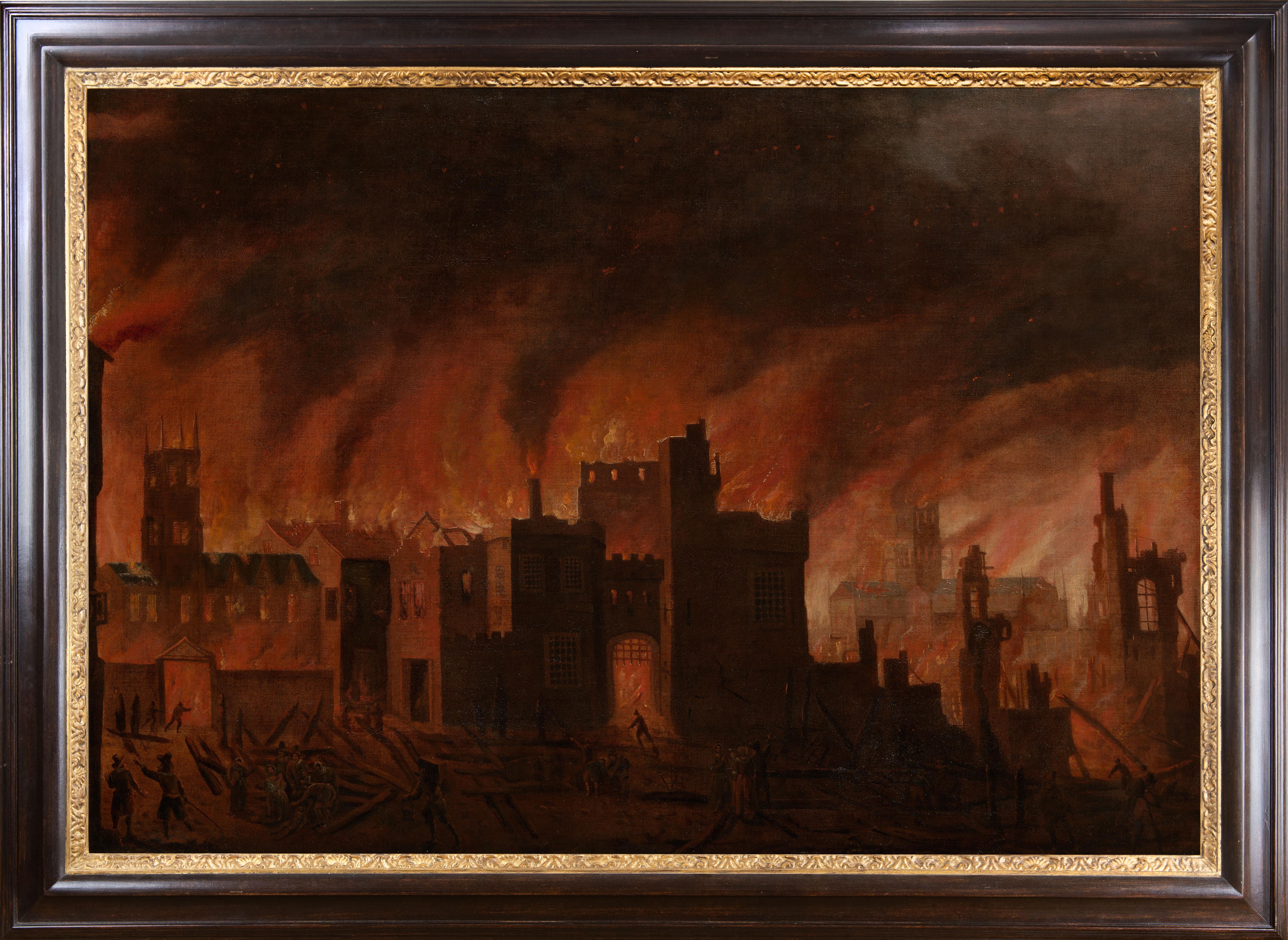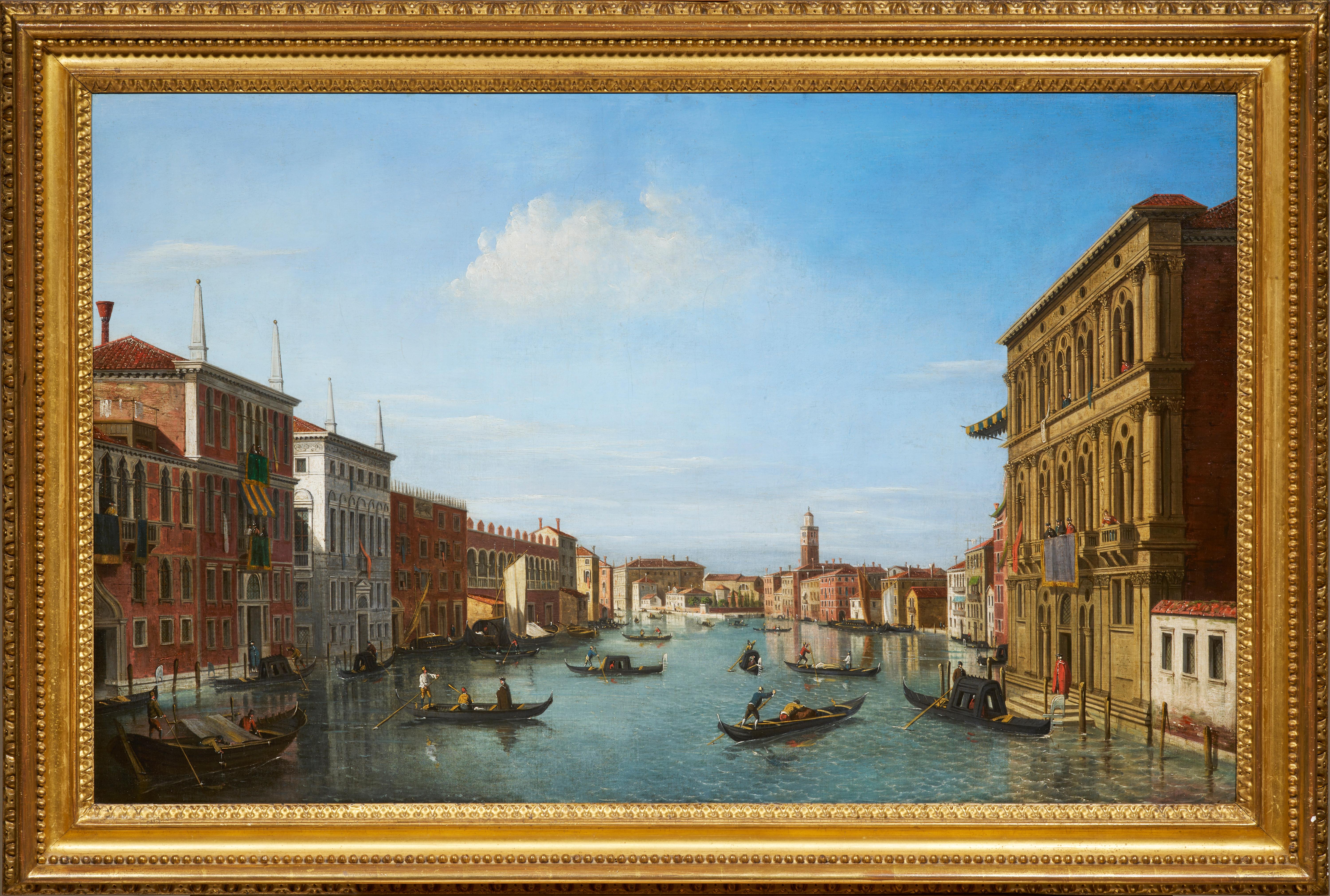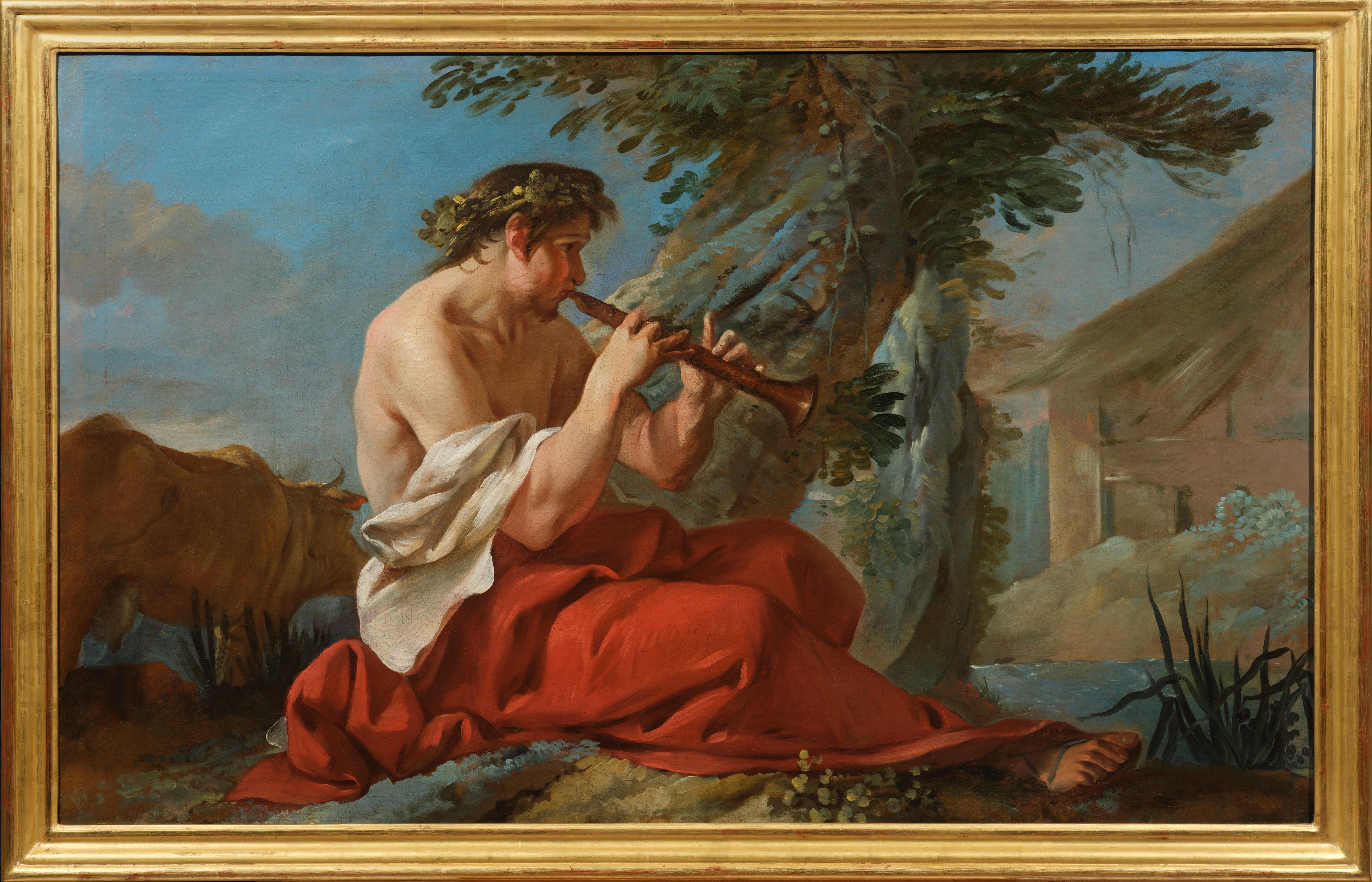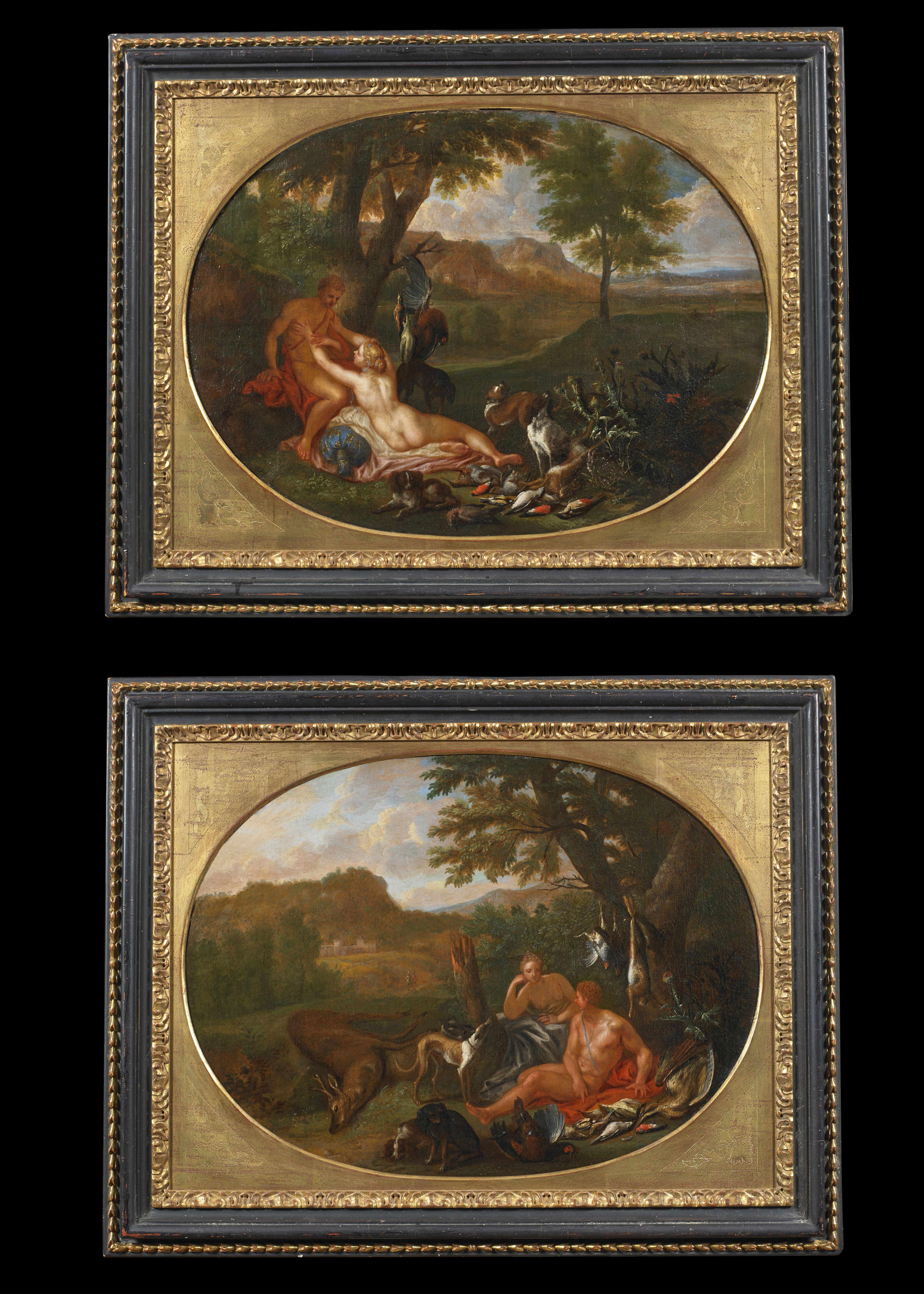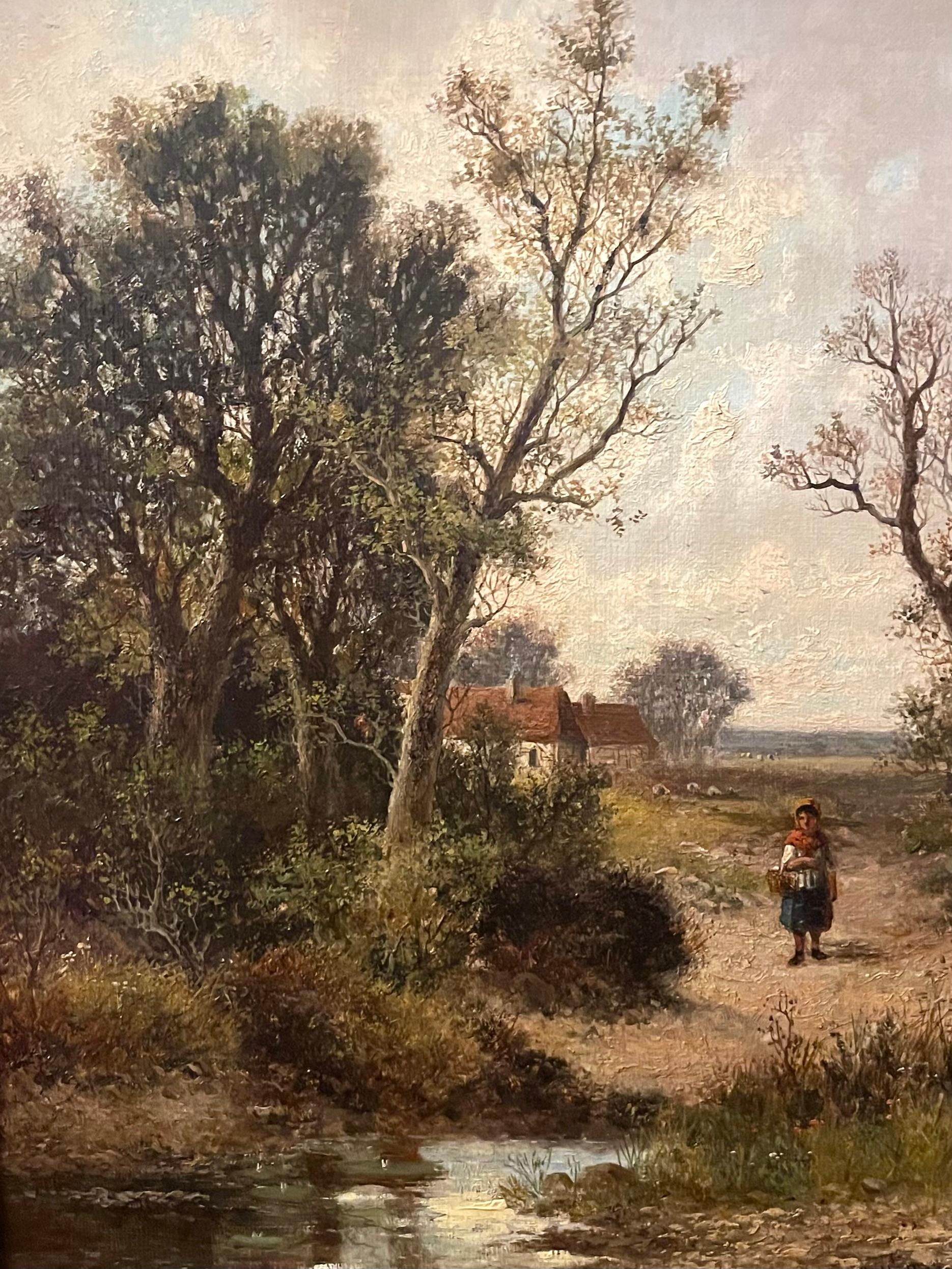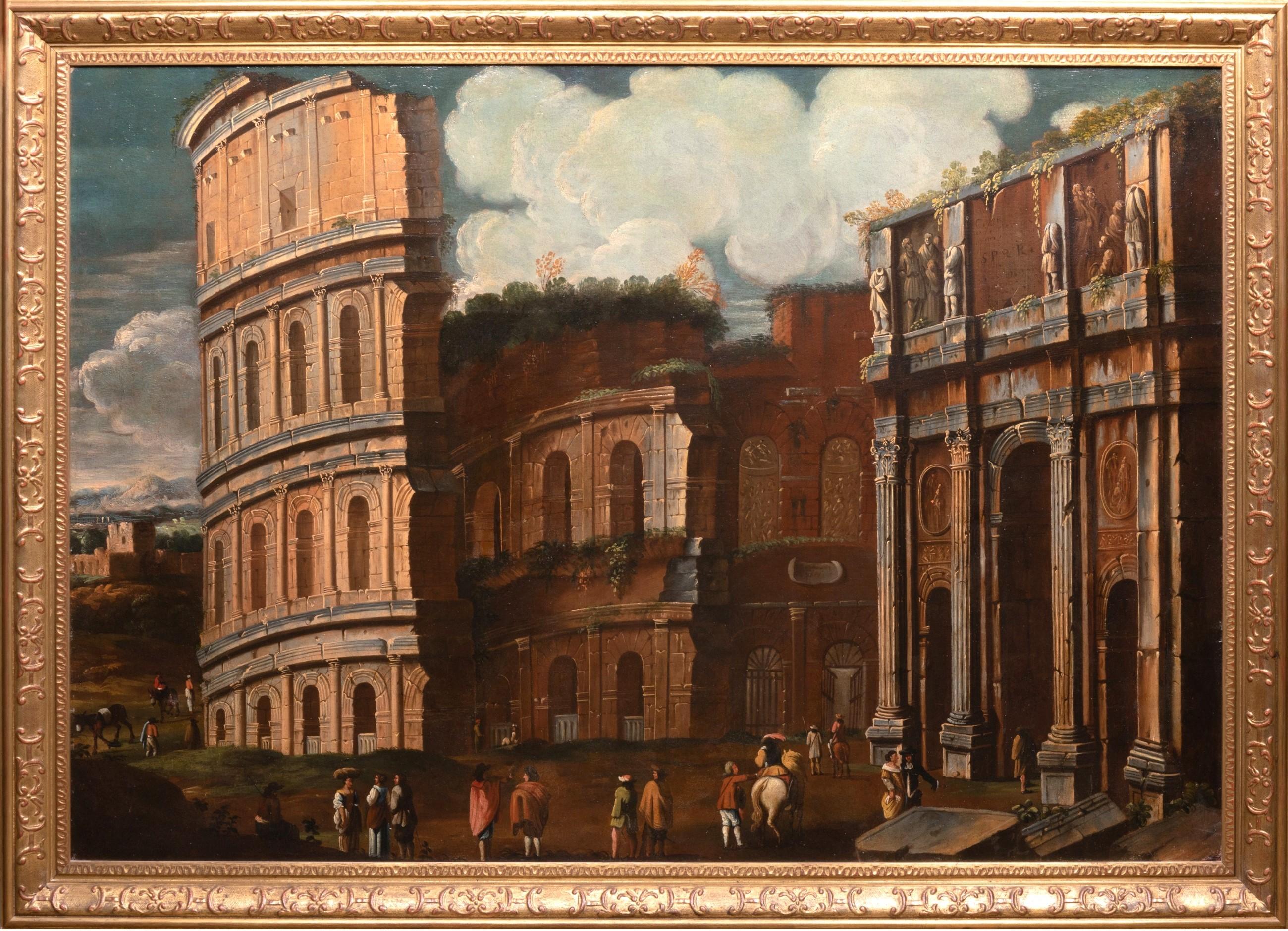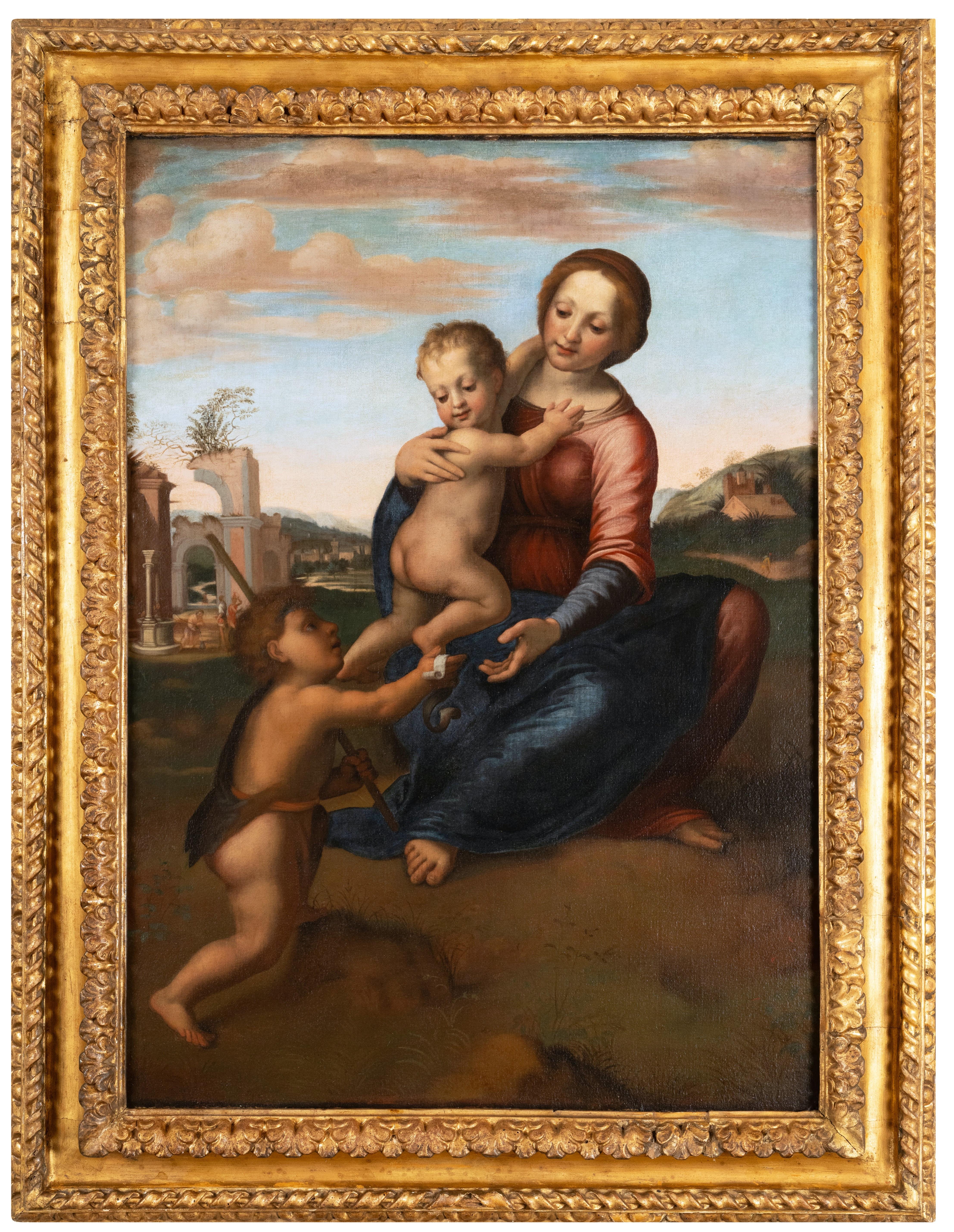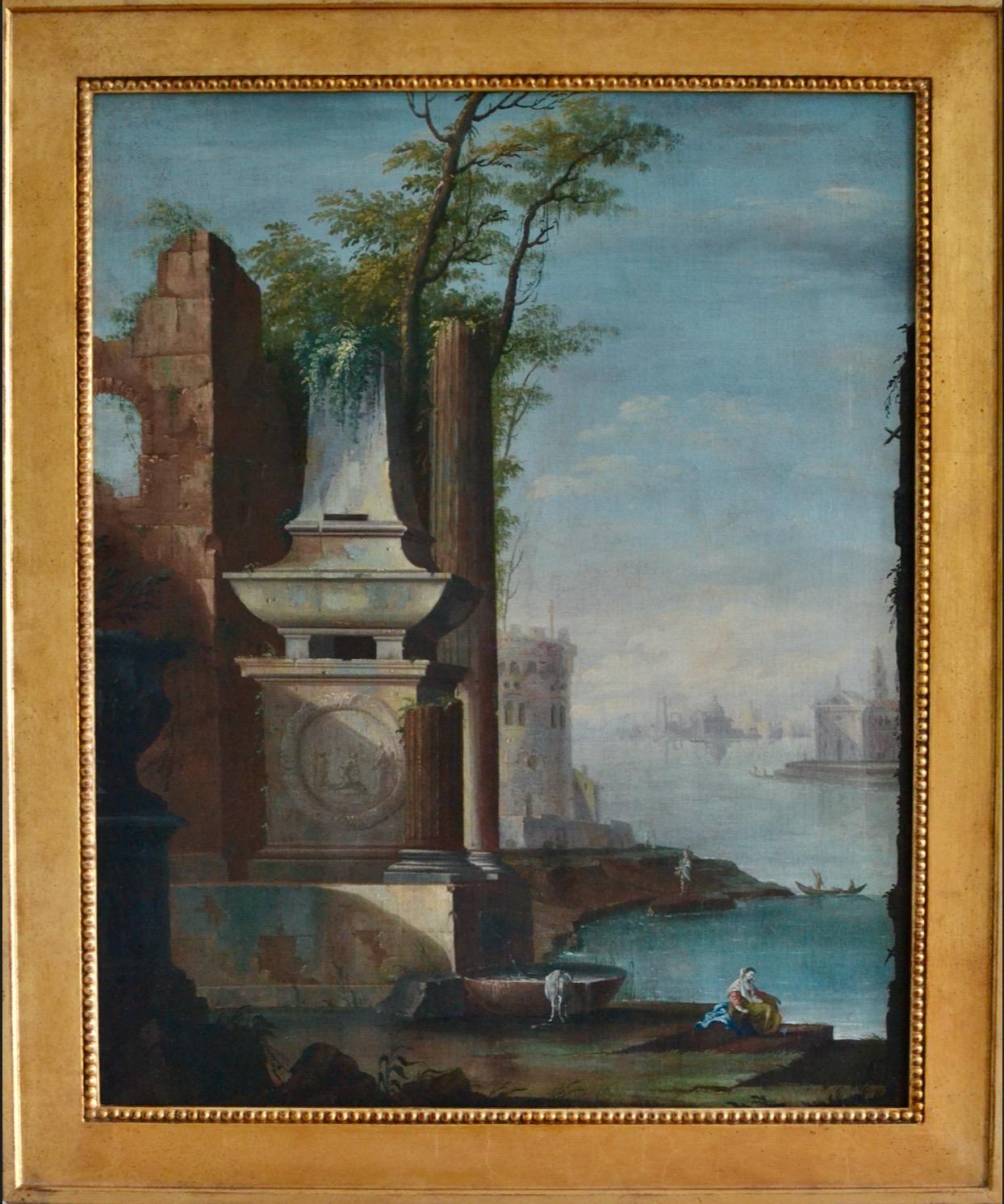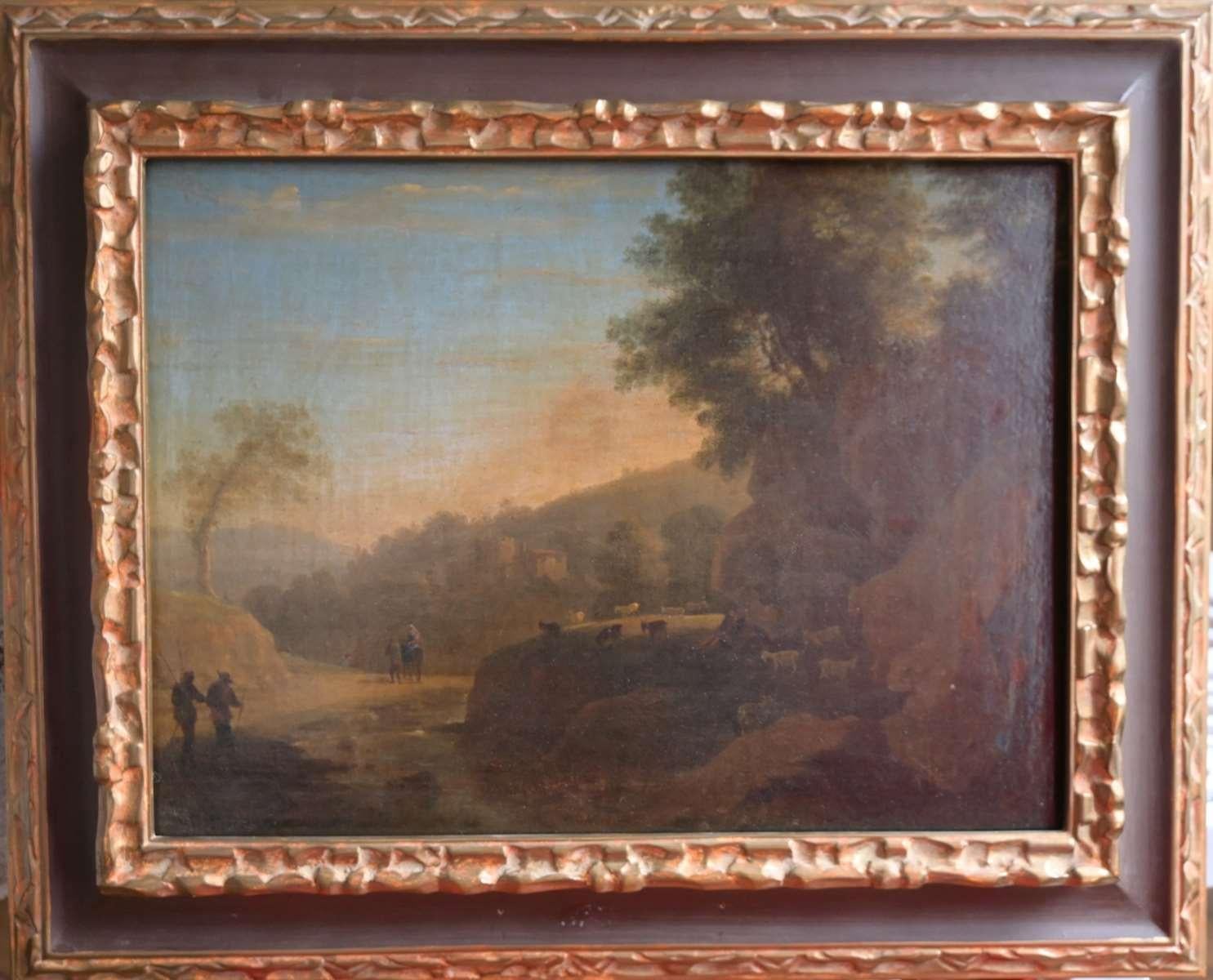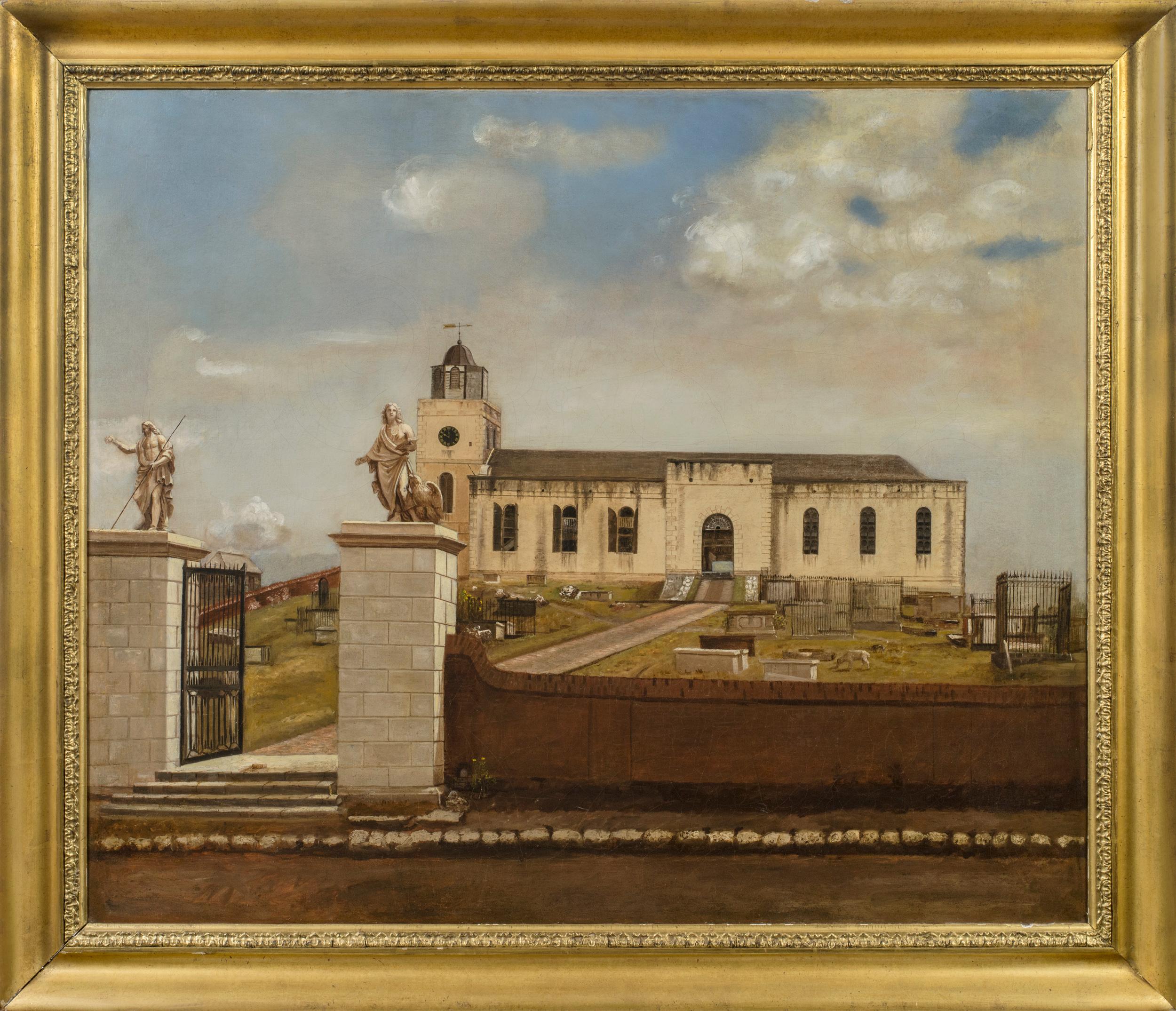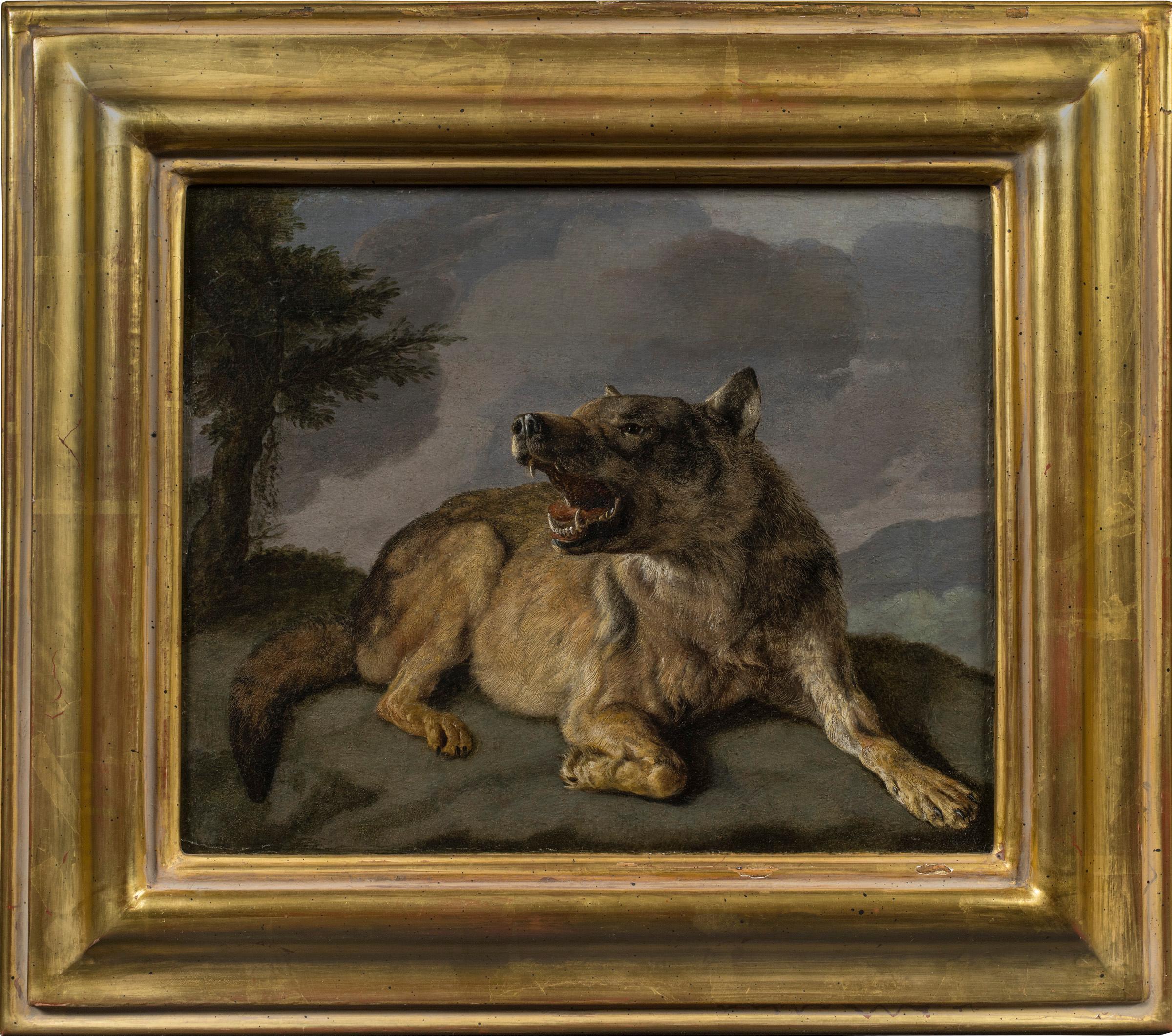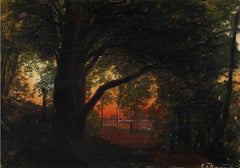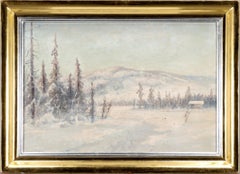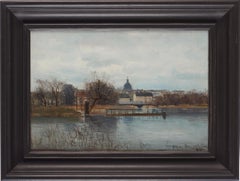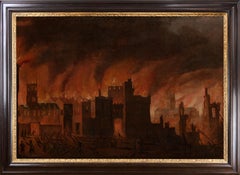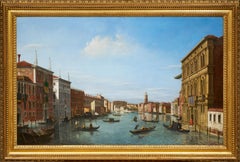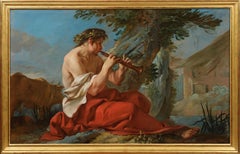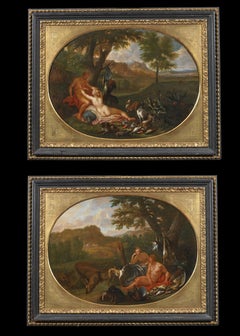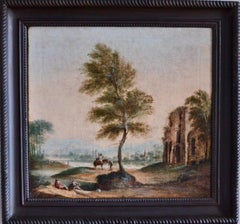
River Landscape with Travelers Resting Next to a Tree and Ruins.
View Similar Items
Want more images or videos?
Request additional images or videos from the seller
1 of 10
River Landscape with Travelers Resting Next to a Tree and Ruins.Late 18th century
Late 18th century
$2,265.34List Price
About the Item
- Attributed to:Christian Georg Schütz (1718 - 1791, German)
- Creation Year:Late 18th century
- Dimensions:Height: 22.05 in (56 cm)Width: 23.63 in (60 cm)Depth: 2.37 in (6 cm)
- Medium:
- Movement & Style:
- Period:
- Condition:Relined and with some older restorations. Surface have recently been cleaned. Frame is 18/19th century. Stretcher is later.
- Gallery Location:Stockholm, SE
- Reference Number:1stDibs: LU2608215332972
About the Seller
5.0
Vetted Professional Seller
Every seller passes strict standards for authenticity and reliability
1stDibs seller since 2023
17 sales on 1stDibs
Authenticity Guarantee
In the unlikely event there’s an issue with an item’s authenticity, contact us within 1 year for a full refund. DetailsMoney-Back Guarantee
If your item is not as described, is damaged in transit, or does not arrive, contact us within 7 days for a full refund. Details24-Hour Cancellation
You have a 24-hour grace period in which to reconsider your purchase, with no questions asked.Vetted Professional Sellers
Our world-class sellers must adhere to strict standards for service and quality, maintaining the integrity of our listings.Price-Match Guarantee
If you find that a seller listed the same item for a lower price elsewhere, we’ll match it.Trusted Global Delivery
Our best-in-class carrier network provides specialized shipping options worldwide, including custom delivery.More From This Seller
View AllCapriccio View with Classical Ruins and Santa Maria della Salute
By Gaetano Vetturali (Lucca, 1701-1783)
Located in Stockholm, SE
A Venetian capriccio view with classical architectural ruins and in the background the church of San Giorgio Maggiore and the Church of Santa Maria della Salute next to the Grand Can...
Category
1770s Old Masters Landscape Paintings
Materials
Canvas, Oil
Sunset over Dyrehaven. Oil on Canvas, 1860.
Located in Stockholm, SE
Carl Frederik Aagaard, Sunset over Dyrehaven. Signed C.F. Aagaard. Oil on canvas laid on card box panel. 22×32 cm without frame. A tergo written:...
Category
1860s Naturalistic Landscape Paintings
Materials
Canvas, Oil
Mountain Winter Landscape
By Anselm Schultzberg
Located in Stockholm, SE
A quiet mountain winter landscape called "Winter road" or as it is written on the back in Swedish "Vinterväg" and “Vinterlandskap from Granberget at Rämen, Värmland", Gran-mountain ...
Category
Early 19th Century Other Art Style Landscape Paintings
Materials
Canvas, Oil
Stockholm View From The Royal Park Djurgården
Located in Stockholm, SE
A view of Stockholm painted from the Royal Park of Djurgården and overlooking the small island of Kastellholmen painted by Alfred Bergström (1869-1930)
The church visible in the background is Katharina church, built in 1695, located in Södermalm, Stockholm.
Signed: Alfr. Bergström, 1887.
Oil on canvas.
A very early work by Bergström when he was only 18 years old. Painted en plein air, probably during the late autumn or early winter of 1887 when he did his first year of study at the Royal Art Academy.
Alfred Maurits Bergström was a Swedish artist and professor at the Royal Academy of Arts. He was a painter, watercolorist and etcher.
During the years 1887–1891 he studied at the Academy and won the Royal Medal...
Category
1880s Naturalistic Landscape Paintings
Materials
Canvas, Oil
$1,572 Sale Price
40% Off
Swedish Sunset over Lake and Mountains
Located in Stockholm, SE
Oil study by a lake and mountains during sunset by Edward Rosenberg (1858-1934). This is a an oil study for a larger painting that Rosenberg did. A te...
Category
Early 20th Century Naturalistic Landscape Paintings
Materials
Canvas, Oil, Cardboard
Sunset Over Stockholm with Steamboat
Located in Stockholm, SE
A magnificent view of Stockholm, featuring a steamboat gliding slowly passing by Skeppsbron, (the bridge) with Södermalm and Katarina Church illuminated in the soft light of dusk. Th...
Category
1920s Art Nouveau Landscape Paintings
Materials
Canvas, Oil, Cardboard
You May Also Like
Early oil depicting the Great Fire of London
Located in London, GB
The Great Fire of London in September 1666 was one of the greatest disasters in the city’s history. The City, with its wooden houses crowded together in narrow streets, was a natural fire risk, and predictions that London would burn down became a shocking reality. The fire began in a bakery in Pudding Lane, an area near the Thames teeming with warehouses and shops full of flammable materials, such as timber, oil, coal, pitch and turpentine. Inevitably the fire spread rapidly from this area into the City. Our painting depicts the impact of the fire on those who were caught in it and creates a very dramatic impression of what the fire was like. Closer inspection reveals a scene of chaos and panic with people running out of the gates. It shows Cripplegate in the north of the City, with St Giles without Cripplegate to its left, in flames (on the site of the present day Barbican). The painting probably represents the fire on the night of Tuesday 4 September, when four-fifths of the City was burning at once, including St Paul's Cathedral. Old St Paul’s can be seen to the right of the canvas, the medieval church with its thick stone walls, was considered a place of safety, but the building was covered in wooden scaffolding as it was in the midst of being restored by the then little known architect, Christopher Wren and caught fire. Our painting seems to depict a specific moment on the Tuesday night when the lead on St Paul’s caught fire and, as the diarist John Evelyn described: ‘the stones of Paul’s flew like grenades, the melting lead running down the streets in a stream and the very pavements glowing with the firey redness, so as no horse, nor man, was able to tread on them.’
Although the loss of life was minimal, some accounts record only sixteen perished, the magnitude of the property loss was shocking – some four hundred and thirty acres, about eighty per cent of the City proper was destroyed, including over thirteen thousand houses, eighty-nine churches, and fifty-two Guild Halls. Thousands were homeless and financially ruined. The Great Fire, and the subsequent fire of 1676, which destroyed over six hundred houses south of the Thames, changed the appearance of London forever. The one constructive outcome of the Great Fire was that the plague, which had devastated the population of London since 1665, diminished greatly, due to the mass death of the plague-carrying rats in the blaze.
The fire was widely reported in eyewitness accounts, newspapers, letters and diaries. Samuel Pepys recorded climbing the steeple of Barking Church from which he viewed the destroyed City: ‘the saddest sight of desolation that I ever saw.’ There was an official enquiry into the causes of the fire, petitions to the King and Lord Mayor to rebuild, new legislation and building Acts. Naturally, the fire became a dramatic and extremely popular subject for painters and engravers. A group of works relatively closely related to the present picture have been traditionally ascribed to Jan Griffier...
Category
17th Century Old Masters Landscape Paintings
Materials
Oil, Canvas
View of the Grand Canal, a painting by William James, after Canaletto
By William James
Located in PARIS, FR
Although we have little bibliographical information on William James, we know that he was trained by Canaletto during the painter's stay in England between 1746 and 1755. Although he may never have been to Venice, William James remained under the influence of his master for a long time and became known for his paintings inspired by Canaletto's artworks.
In this painting, William James is inspired by one of the twelve views of the Grand Canal painted by Canaletto for Joseph Smith, or more precisely by the engraving made by Antonio Visentini in 1735 after this painting. He delivers a very personal version, vibrant with colours, in which he brilliantly reproduces the moving surface of the sea, animated by the ever-changing traffic of the gondolas.
1. William James, the English follower...
Category
Mid-18th Century Old Masters Landscape Paintings
Materials
Canvas, Oil
Mercury and Io, a rediscovered painting by Jean-Baptiste Marie Pierre (ca. 1740)
Located in PARIS, FR
We would like to thank Mr. Nicolas Lesur for confirming the autograph nature of the entire composition after a direct examination of the painting on November 27, 2024.
This painting...
Category
1740s Old Masters Figurative Paintings
Materials
Canvas, Oil
18th Century Galanti Scenes Van Limborch Rest Hunting Oil on Canvas Green Red
Located in Sanremo, IT
Pair of oval paintings measuring 66 x 89 cm without frame and 90 x 115 cm with coeval frame depicting two gallant moments during a rest from hunting by painter Hendrik Van Limborch (...
Category
1730s Old Masters Landscape Paintings
Materials
Canvas, Oil
Landscape Near Felday, Surrey
By Abraham Hulk the Younger
Located in Hillsborough, NC
Dutch/English artist Abraham Hulk the Younger (1851-1922) is most known for landscapes of the British countryside. This work is one of a pair (the second work is also available by s...
Category
Late 19th Century Old Masters Landscape Paintings
Materials
Canvas, Oil
$2,240 Sale Price
20% Off
View of Ponte Milvio in Rome
Located in Roma, RM
Northern painter active in Rome in the second half of the 17th century, View of Ponte Milvio
Oil painting on canvas 73 x 97 cm in coeval Roman Salvator Rosa frame.
Category
18th Century and Earlier Old Masters Landscape Paintings
Materials
Canvas, Oil
